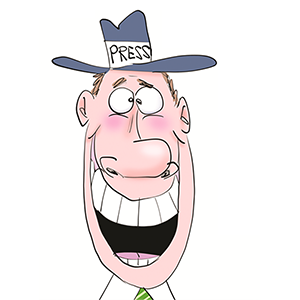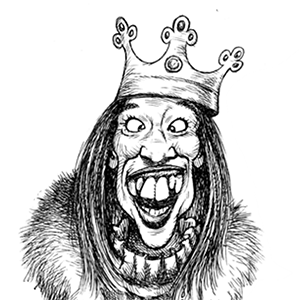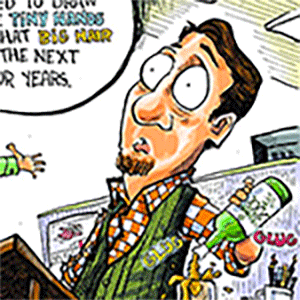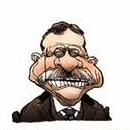Stephen Mihm: It's not just Sydney Sweeney -- The US always fights about jeans
Published in Op Eds
The American Eagle Outfitters Inc. Sydney Sweeney “Good Jeans” controversy happened in late July — a lifetime ago in internet terms — but here we are, halfway through August, and people are still talking about it.
One of the latest references happened last Friday, when Dr. Phil, outraged that liberals found fault with the ad, announced plans to buy American Eagle blue jeans for every woman in his family.
It's easy to read this episode as yet more evidence of our degraded civic discourse. But what if this is merely the latest front in the decades-long battle over the meaning of blue jeans?
They’re part of our common culture, yes, but they have a long history of “triggering” one group or another — the inevitable consequence of the fact that so many groups think that this most ubiquitous and recognizable article of clothing belongs to them.
One man’s name is inseparable from the birth of blue jeans: Levi Strauss. In 1873, one of his customers — a tailor named Jacob Davis, based in a mining town in Nevada — approached him with a proposition.
Davis explained that he had been making tough trousers out of denim that he had purchased from Strauss. These pants, reinforced with metal rivets, had proven popular with miners, and Davis wanted Strauss to help him build the business.
The two men secured a patent for the design (note the miner and his pickaxe), soon founding a company to sell the pants and hawking them to miners and cowboys who wanted clothing that could handle wear and tear.
Other companies got into the business, too, and over the next half century, blue jeans — then known as “waist overalls” — became popular across a broad swath of the nation’s working class.
Look at the iconic photographs of working Americans taken during the Great Depression, and one thing stands out: virtually everyone wore blue jeans, along with their close cousins, denim coveralls and overalls. It was the uniform of the masses — the ordinary people who worked in factories and on farms. And had it remained that way, there would be no occasion for this column.
That same decade, though, witnessed another trend that proved a harbinger of things to come: the cultural appropriation of blue jeans as a fashion statement. The first offenders were affluent Americans who began visiting so-called “dude ranches” out West. Hanging out with cowboys and other “authentic” Americans led to a fashion fad focused on “Dude Ranch Duds,” with Levi Strauss & Co. in the lead. The company even launched the first blue jeans for women in 1934: Lady Levi’s.
In the process, blue jeans went from being a functional item of clothing associated with working-class Americans to something far more malleable: a literal canvas by which wearers broadcast their identity.
And broadcast they did. Jeans became ubiquitous thanks to Marlon Brando. Long before he became a household name, Brando refused to abide by the dress codes that aspiring actors followed. “During what might be called his Blue — or Blue Jean — Period, Brando went everywhere in such clothes,” reported the Washington Post in a breathless profile of the star. Receptionists and gatekeepers at talent agencies and in Hollywood “mistook him for a man who had come to repair a broken pipe or wash the windows.”
Brando translated his own style onto the screen, beginning with The Wild One, where he played the jean-wearing leader of a biker gang that takes over a small town. White middle-class high schoolers and college students loved the look and immediately adopted it as their own.
Their elders were not amused.
In 1957, the New York Times informed readers that blue jeans, formerly a wholesome bit of clothing, had gotten a bad rep. “Ever since the ‘motorcycle boys’ started wearing blue jeans in anything but a neat manner, many schools over the country have banned this attire from the classroom,” the paper reported.
By the 1960s, the transgressive power of jeans exploded, particularly after they became the uniform of the youthful tribes that made up the counterculture. Vietnam War protesters wore jeans embroidered with peace signs, while feminists wore jeans, not skirts, to claim equal rights. Civil Rights protesters embraced the look because it mirrored denim worn by enslaved people and sharecroppers — a subtle suggestion that not much had changed in the segregated South.
From there, the jean wars only intensified. On the one side, bell bottoms became the signature look of 1970s radicals. By 1980, jeans had slimmed, but were associated in some circles with declining morals. That year, a then 15-year-old Brooke Shields appeared in a series of highly sexualized ads for Calvin Klein jeans that social conservatives decried.
At the same time, a conservative counterrevolution began reclaiming jeans for themselves. After Ronald Reagan became president, he broadcast an image of himself as a rancher at heart who was happiest wearing his beloved blue jeans. George W. Bush took the same look and ran with it when he was president, helping reclaim jeans for conservatives.
As the Sydney Sweeney jeans controversy gradually fades from the spotlight — at least as much as it can in today’s hostile political climate, where it’s bound to resurface from time to time — it’s worth remembering that dust-ups surrounding denim are far from unprecedented. And in an era in America when so little feels familiar, perhaps that sense of déjà vu can be a guide for navigating similar culture wars.
_____
This column reflects the personal views of the author and does not necessarily reflect the opinion of the editorial board or Bloomberg LP and its owners.
Stephen Mihm, a professor of history at the University of Georgia, is coauthor of “Crisis Economics: A Crash Course in the Future of Finance.”
_____
©2025 Bloomberg L.P. Visit bloomberg.com/opinion. Distributed by Tribune Content Agency, LLC.
























































Comments